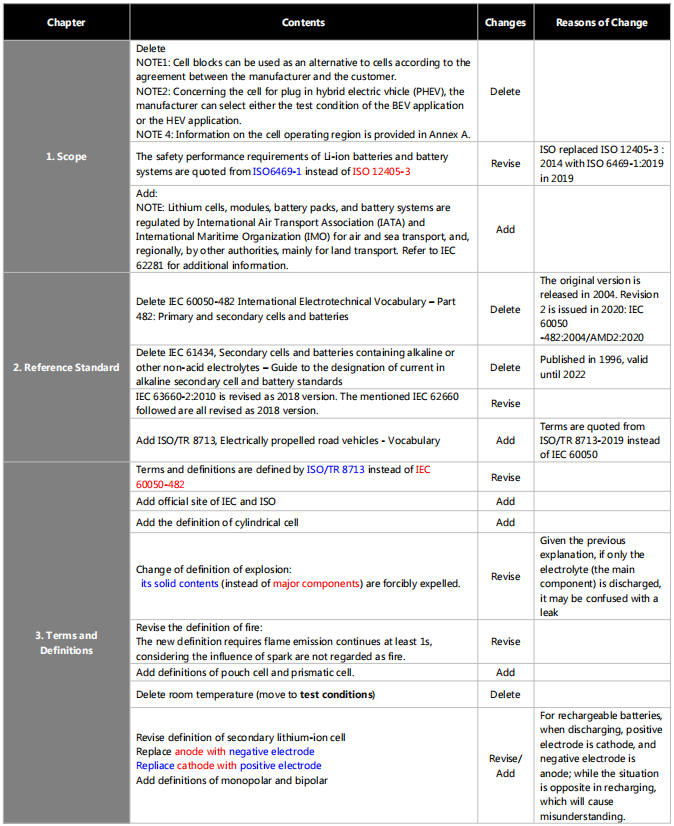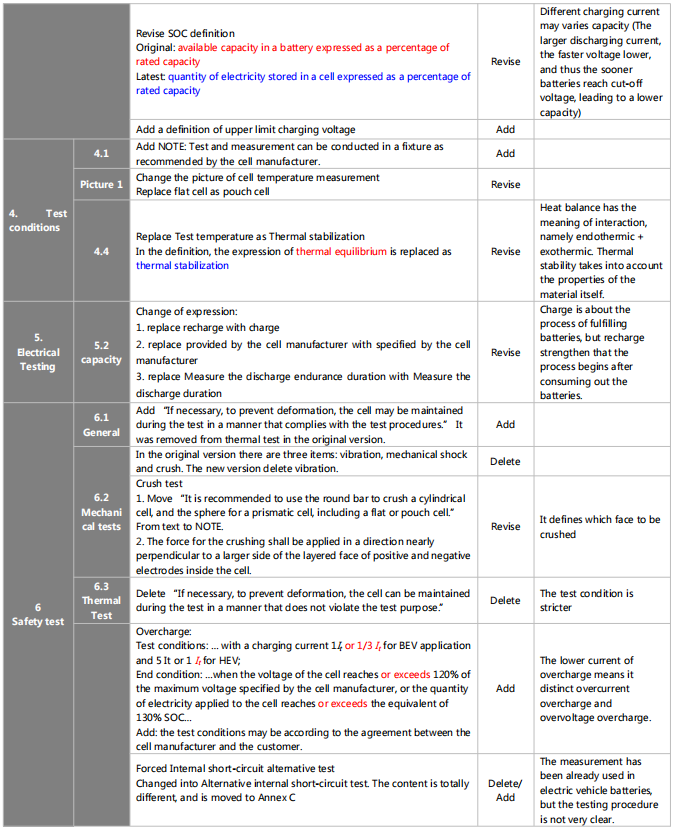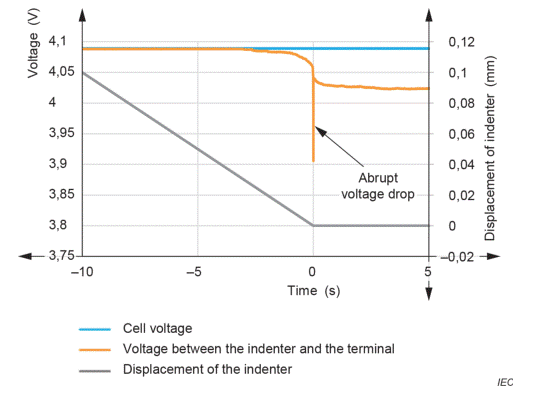What’s new in latest IEC62660-3
IEC 62660-3:2022 varies from version 2014 as follows. The column of Reasons of Change is inferred from our actual work, which may be worth as reference.
Detailed Analysis on New Internal Analysis
The new version mentions a new forced internal shorting test. The new method is to stimulate internal shorting by penetrating to create positive and negative tabs in layer 1 and 2 shorting. The procedure is as followed:
1. Cell preparing: Drill a hole in the center of the largest face (as figures below) or reserve a hole when manufacturing for venting.
2. Fixation of the cell: After fully charged, fix the cell in the testing tools. The cell shall be electrically isolated from the test bench. The cell and indenter shall move along the perpendicular axis. The indentation position shall be the same as described in forced internal shorting.
3. Connecting the monitoring line: The temperature monitoring line on cell surface, the voltage of the cell, the voltage of cell negative terminal and the intender (the voltage shall be recorded with sample rate of at least 1000Hz);
4. Press the intender to the cell with a constant velocity of 0.01mm/s. The press speed may be faster than 0.01mm/s if a one or two-layer internal short circuit can be achieved. The press should be stopped when a visible abrupt voltage drop is detected, and the intender should be released from the cell and release the press.
5. Observe: After the pressing, the cell shall be observed for 1h. The intender shall remain in place at the stop, and be kept stable within ± 0.02mm in the X, Y and Z directions until the end of test, including the observation period.
6. NOTE: After the end of observation ,the cell can be disassembled to check the number of shorted layers.
MCM Notice:
1. In the new standard ISO 6469 IS quoted instead of ISO 12405-3. The reason is ISO has officially replaced ISO 12405-3 with ISO 6469. Meanwhile ISO 12405-4 has replaced ISO 12405-1 & ISO 12405-2. Manufacturers may consider this situation when applying to ISO 12405-1/-2/-3
2. There are two difficulties in the new forced internal shorting. One is to penetrate the hole if there’s no hole reserved when producing. Therefore manufacturers may consider reserving a hole to prepare for the test. The other is the monitoring. The standard requires at least 1000Hz of rated recording. The higher frequency of recording, the more accurate the record will be; therefore we suggest using a faster recording. However many penetrating devices do not support synchronized voltage recording. New devices or new control programs are needed.
3. MCM is already experienced in this kind of forced internal shorting. We can provide this testing service.
Post time: Jul-05-2022






